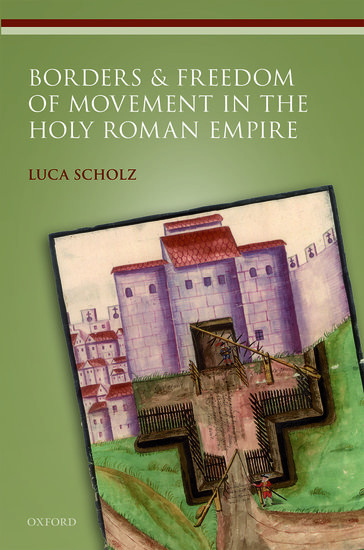


Reviewer Rosa Salzberg - University of Warwick
CitationThe Holy Roman Empire in the early modern period was an extremely complex political entity; a patchwork of over three hundred small states and principalities. For this reason, as Luca Scholz shows, the Old Reich presents an «exceptionally rich historical laboratory for studying the history of free movement and its restriction» (p. 2), as these numerous small polities struggled to monopolize the benefits, and minimize the potential risks of people and goods moving through their jurisdictions.
In this impressive and important book, Scholz zooms in and out between the micro-scale (examining how mobility was negotiated by ordinary people on the roads and rivers of specific territories) and the broader canvas of the Empire. This allows him to bring into sharper focus the crucial role of mobility in early modern state formation. In particular, he is able to trace the way in which early modern German states strove to monopolize what the sociologist and historian John Torpey has called «the legitimate means of movement». When considering early modern mobility, however, Scholz argues that we need to shed our contemporary obsession with state borders as «closable membranes» regulating migration. Instead, we should shift our attention towards «channels, corridors, and checkpoints»: the critical sites and thoroughfares where freedom of movement was negotiated between travellers, migrants, local officials and settled communities. While «boundaries feature prominently on our maps of the Holy Roman Empire», Scholz notes, «they did not pose a particular obstacle to most travellers until the mid-eighteenth century» (p. 127).
Taking a cue from contemporary literature of the «mobilities turn», Scholz provides a wealth of evidence for the many different types of movement that animated early modern states, and for the very many reasons that authorities at the time tried to not only control but also to channel, protect or promote this mobility through their territories. These motives ranged from economic incentives (customs and tolls exacted on both goods and people) to the wish to impede the passage of ‘undesirable’ groups and the need to contain the spread of diseases. Just as now, not all people on the move were treated equally: the regulatory mechanisms that early modern states developed and honed collectively created «a discriminatory regime of mobility that privileged the movements of certain social groups (such as princes and their households) over others (such as foreign merchants or Jewish persons)» (p. 20).
Several of the book’s chapters shed light on some of the various practices and forms of infrastructure used by early modern authorities in their attempts to manage mobility. In particular, Scholz highlights the ritual of safe conduct, which evolved in this period from a form of protection for eminent or at-risk travellers to a politically-charged and fiscally lucrative tool of government; an important opportunity for rulers to express their sovereignty. Nonetheless, as he highlights, the practice of escorting travellers through a territory also constantly provoked disputes, between neighbouring authorities over where one jurisdiction ended and another began, and also with local populations who were called upon (and who were often unwilling) to take part in processions and sometimes to provide food and lodging for people on the move.
Scholz’s research also provides evidence for the increasing importance of paper forms of documentation in the control of pre-modern mobility; he looks especially at letters of passage, which gave their bearers the right to move unmolested or exemption from tolls or duties. Again, however, he demonstrates how the use and effectiveness of these kinds of instruments of control were subject to extensive negotiation on the ground, with an important part played by petty officials and other local figures such as innkeepers, in facilitating or impeding the movements of different kinds of travellers.
Indeed, a particularly valuable aspect of Scholz’s book is the way in which he examines the actions of rulers and governments alongside the role of low-level officials and local communities in policing or promoting that movement, while also making efforts to recover how ordinary people experienced the act of moving in this period. Vivid examples he has unearthed from the archives include a baker grumpy about being forced to get up early to participate in the ceremonial escort of some ships returning from the Frankfurt trade fair; acts of violence and vandalism against toll columns or turnpikes in protest against tariffs and restrictions on movement; and a particularly memorable, profanity-ridden exchange between one traveller and the lowly official requesting to see his colleague’s passport.
This work is grounded in extensive archival research and illustrated by wonderful contemporary images, such as detailed drawings and paintings produced as evidence in disputes over particularly crucial thoroughfares or hubs of movement. While the final chapter examines early modern legal and philosophical debates about freedom and control of movement, Scholz also illuminates his findings throughout the book by engaging closely with recent literature from the social sciences and contemporary history. Notably, too, he synthesizes a vast amount of German-language scholarship on these topics, making it accessible to a wider public.